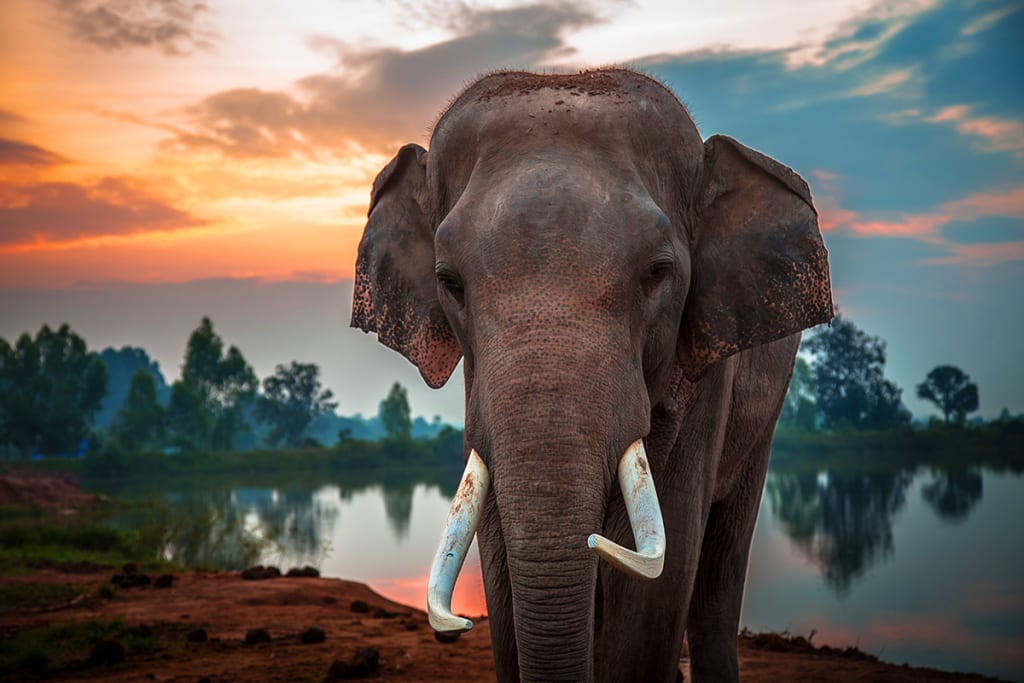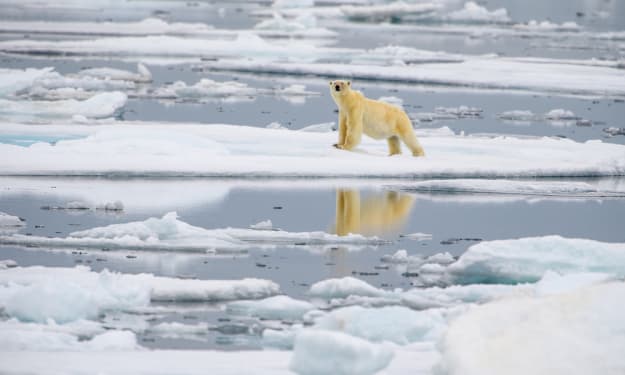HUMAN-WILDLIFE CONFLICT AGGRAVATED BY CLIMATE CRISIS
Human-wildlife conflict is becoming an increasing concern as human activity encroaches on natural habitats due to climate change. Find out how a new study involving elephants shows how we can plan for and minimize these tensions in the future.

My ancestors settled in Canada back in 1850. One of their main activities when they first arrived was what they called “the chopping.”
They and their neighbours gradually cleared away huge tracts of virgin forest. Then they took all that irreplaceable timber and burned it in huge bonfires, making no use of the heat or light from them.
These old-growth forests included sugar maple, beech, hemlock, oak and basswood trees. Losing them led to the disappearance of wolves, grey foxes, elk, woodland caribou and passenger pigeons among many other species. Whenever animals like wolves, foxes and bears threatened livestock, settlers hunted them to extinction.
NEW FORESTS DON’T HAVE THE SAME DIVERSITY\
Although conservation authorities have done some reforestation, those new forests don’t have the same biodiversity as the ones my ancestors played a role in devastating. The remaining wildlife lacks genetic diversity, which makes it harder for them to adapt to additional stresses.
That was one of many examples of human-wildlife conflict during the colonial period. The more we slice up natural habitats, the more new contact arises, for better or worse, between humans and wildlife.
This week, the journal Science of the Total Environment published a study of human-wildlife conflict in Thailand. A team of researchers from the Institute of Industrial Science at the University of Tokyo looked at how the risk of conflict between humans and elephants changes with time.
PEOPLE COME INTO MORE CONTACT WITH WILDLIFE
As we encroach on natural settings, people come into more contact with wildlife, often for the first time. The wildlife often damages livestock or crops. By the same token, as we’ve seen, human activities damage animal habitat, leading to extinctions. The friction runs both ways.
In Thailand, elephants thrive near forest edges. This often leads them into human-wildlife conflict when they come across mature crops.
About half of the Thai population are farmers living in rural areas. They don’t appreciate it when elephants help themselves to their harvests.
THAILAND IS HOME TO BETWEEN 3,OOO AND 4,000 ELEPHANTS
Thailand is home to between three and four thousand elephants. “Deforestation and the growth of commercial agriculture have pushed elephants into increasingly fragmented patches of habitat,” the study’s lead author Nuntikorn Kiltratporn explains,”increasing the chance of interactions between humans and elephants.”
Professor Kiltratporn’s study uncovers a new wrinkle. The climate crisis complicates the elephant-farmer relationship.
As climate change alters ecological conditions, elephants try to adapt to new circumstances. They behave differently and they move to different places to respond to new demands.
CLIMATE CHANGE INTENSIFIES HUMAN-WILDLIFE CONFLICT
That can intensify human-wildlife conflict in Thailand’s remote areas. The team wanted to conduct a risk assessment of increased elephant-human tensions.
The scientists adopted a risk framework incorporating a range of potential scenarios. They looked at the locations of recent human-wildlife conflicts involving elephants.
The historical data came from 2000 up until 2019. They used that information to project how conflicts will look between the years 2024 and 2044.
RISK FRAMEWORK PREDICTED CHANGES IN LAND USE
The scenarios incorporate different assumptions about future climate change and socioeconomic changes. The risk framework predicted how these changes would affect land use during the forecast period.
“We found a spatial shift in risk toward northern areas and higher latitudes,” Professor Kitratporn said. “In other areas, habitat is likely to become less suitable over time, which could first increase and gradually decrease the risk of interactions.”
Earth’s biodiversity is facing five crises. These include, in order of importance:
1. Changes in land and sea use
2. Exploitation of natural resources
3. Climate change
4. Pollution
4. Invasive species.
HUMAN-WILDLIFE CONFLICT ENCOMPASSES ALL FIVE CRISES
Human-wildlife conflict encompasses all of them. We encroach on natural habitats, extract resources, burn those resources, pollute the air, water and soil and introduce plants and animals into places where they don’t belong.
It’s a very one-sided conflict. Our activity introduces habitat changes to which native species have no choice but to adapt. Then, we attack those species for their new activities, even though we’ve caused them.
No wonder Earth’s wildlife populations have declined by two-thirds since 1970. Without biodiversity, our ecosphere is doomed to collapse.
HUMANITY NEEDS A NEW WAY OF THINKING
Humanity needs a new way of thinking. We need to transform our world from its current Anthropocene, or human-centred era into an ecozoic era of mutually enhancing relations with the natural world.
This study from Thailand shows the multi-faceted nature of human-wildlife conflict. Climate change causes changes in land and sea use, which leads to exploitation of natural resources, which leads to invasive species. It’s a vicious cycle.
FOSTER COEXISTENCE BETWEEN HUMANITY AND NATURE
If we want a future based on respecting and nurturing Earth’s interrelated web of life, we need to apply these discoveries about how human-wildlife conflicts arise and change over time. This new knowledge enables us to plan our activities in ways that foster coexistence between Humanity and Nature.
We always have more to learn if we dare to know.
Learn more:
Wildlife-Human Conflicts Could Shift with Climate Change
Human-elephant conflict risk assessment under coupled climatic and anthropogenic changes in Thailand
Animal Movement Disruptions Threaten Biodiversity
Forest Elephants and Climate Change
‘Making Peace with Nature’ Report Offers Sustainable Blueprint
About the Creator
David Morton Rintoul
I'm a freelance writer and commercial blogger, offering stories for those who find meaning in stories about our Universe, Nature and Humanity. We always have more to learn if we Dare to Know.






Comments
There are no comments for this story
Be the first to respond and start the conversation.